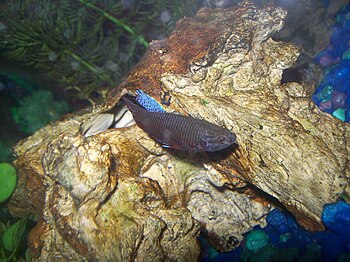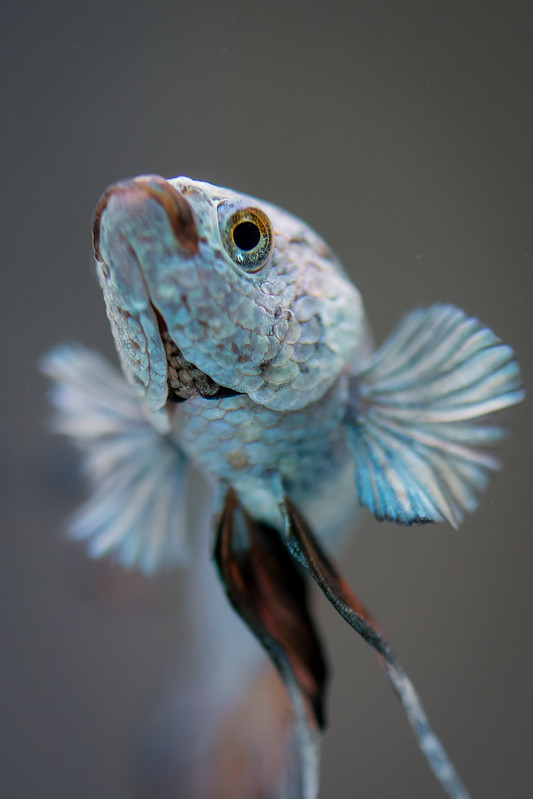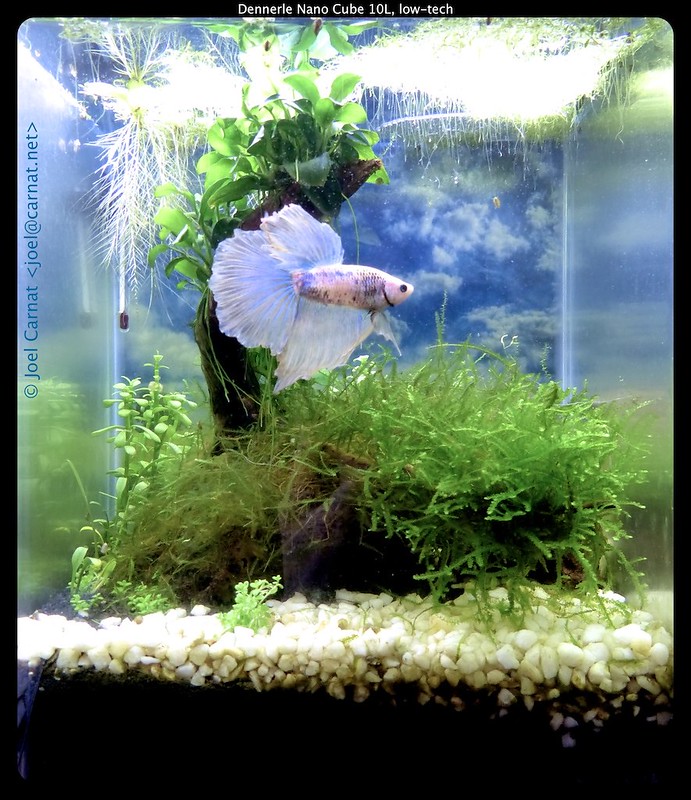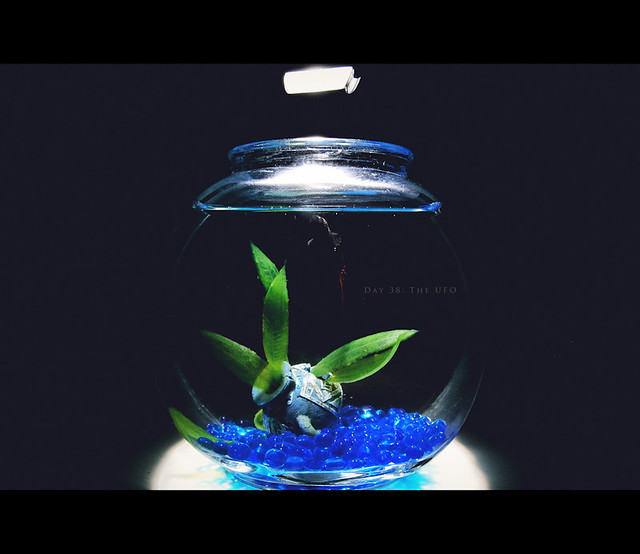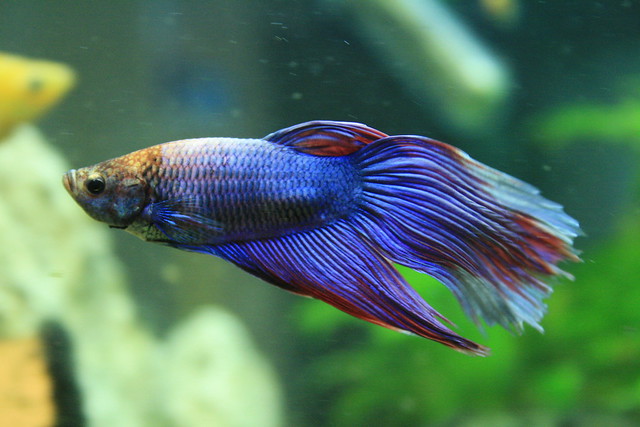 |
| Siamese fighting fish, B. splendens, is often referred to as betta in the U.S. (Photo credit: Wikipedia) |
Originating from the paddy fields of Vietnam, Betta is an astounding fish and I will be answering in this article the 10 most popular questions I get asked on a regular basis about Betta Fish. So let's get started...
1. How Do You Stop Betta Fish From fighting?
This is probably one of the most popular questions I get asked!
In my experience, I've found a few ways that work...
One way is simply to get a bigger tank. With the bigger tank you can include a couple of new plants, bear in mind you don't want to overdo it with the plants otherwise you will ruin your fish display (not very appealing to your guests!). By making the tank bigger and introducing a few more plants it creates extra hiding places for your Betta when the aggressive one is on the warpath!
A second way is to simply separate the aggressive fish from the rest. This can be done by putting a divider into your tank, or by taking the aggressive fish out and putting it into a new tank. I would personally recommend putting a divider into your tank, size permitting of course, as your Betta will know the other Betta Fish are there. It also helps when it comes to the breeding process because introductions would have already been made.
Thirdly, you must NEVER, I repeat NEVER put a male Betta in with another male Betta Fish, period! Otherwise, they will fight to the death (this is why they are also known as Siamese Fighting Fish!). So by not keeping males together, this will reduce fighting astronomically.
Female Betta's have been known to be aggressive and fight between each other, particularly if you have 2 together. However, this is just an "I'm the leader" thing going on between them and usually wears off, but a technique I've used and seen have great success to stop this happening is to add a 3rd female into the tank. By doing this any tension between the previous two is removed - try it, you'll be surprised how effective it is!
2. Can You Keep Male and Female Betta Fish Together?
Yes yo,u can. However, I would recommend keeping a close eye on the male Betta just in case he becomes too aggressive and the female needs to be removed. As I mentioned above, having plants in the tank can help the female hide if the male becomes aggressive.
3. How Do You Tell the Difference Between a Male and Female Betta Fish
I always remember the saying "It's easy when you know how..." when I get asked this question because when I first started breeding Betta Fish it took me ages to recognise the difference between a male and a female...
You will tend to find that female Betta's have fat bellies where males tend to have a more streamlined structure. Also, you will find that males have a longer body and fins whereas the females are shorter in body size and fin length.
Also, male Betta Fish tend to have more colour and longer pointed anal fins compared to their female counterparts (sorry ladies!). You will also find female anal fins are more level to their body. The anal fin is the rigid looking fin coming from the bottom of the Betta Fish.
However, one giveaway of a female is her white spot on the underside of her belly. This white spot is called the ovipositor and is used during the breeding process.
4. What are the Best Caring Tips for Betta fish?
Lots of people have written books on the subject of caring for Betta Fish but I'm going to give you my best tips that I've picked up along the way...
- Test your water's acidity level regularly. A PH level of 7 works best in my experience.- Always try and keep the water temperature at around 75-80 Fahrenheit. I would recommend testing this regularly using a floating thermometer because big drops in water temperature can cause stress on your fish. Floating thermometers in my experience give the best accuracy reading because they are kept in the tank water.- Always keep a lid/cover over the top of your tank with air holes in it because Betta Fish can jump and you might not be there to catch them!- Any filtration system should be kept at a low level and you must take care not to put the air intake in such a position that it could cause your Betta to get hurt. Having your filter system at a high setting has been known to cause stress to your Betta.- Try and clean your tank regularly, ideally twice a week. Remove bits of food caught under the stones, castles or leaves of your tank.- As a rule of thumb I recommend 3 quarters of a gallon per Betta fish in your tank. Also, try and get a spacious tank to allow your Betta plenty of room to show off their personality, you'll be surprised some are very exciting to watch!
I've always found if you love your Betta like you love your own then you won't go far wrong, and with implementing the above you will be well on your way to having truly astonishing Betta Fish.
5. What Should I Feed My Betta Fish?
Surprisingly, Betta Fish are known to be fussy eaters (and you thought us humans were bad!). So it is best to feed them on a variety of foods, such as:
- Brine shrimp- Daphnia- Frozen Bloodworms- Blackworms (Tubifex) worms- Combination Betta Pellets from Pet Shops- Powder Fish Food if feeding Fry- Vegetables (such as green beans, not a whole one but in tiny portions)
I tend to find a regular feeding pattern of 2-3 times a day works best for Betta. Try as well to make portions eaten in one sitting otherwise any leftover food could lead to additional bacteria in the tank potentially causing disease for your Betta Fish.
6. What are Betta Fish also Known as?
Not a lot of people know this but Betta Fish are also known as Siamese Fighting Fish. The name originates because of the males aggressiveness and their "Fight to the Death" attitude if two males are put in the same tank together.
Betta fish are often referred to as Betta Splendens but this is a type of breed of Betta, which leads us nicely onto the next question...
7. What are the Different Types of Betta Fish Available?
There are many types of Betta Fish available, the most popular types I've listed below:
- Betta Splendens (the most common type)- Betta Bellica- Betta Coccina- Betta Picta
Some of the most popular Tail Types of Betta are:
- Veil Tail (this generally the most common tail type that you find at the pet stores)- Delta Fish (normally any fish under the 180 degree tail span is considered a Delta)- Super Delta Fish (normally any Betta with a tail span of 120-180 degrees)- Fan Tail (the Betta's tail displays a smoothly rounded edge)- Half Moon (as it's name suggest it's tail is the shape of a half moon - a 180 degrees span, this is the fish most breeders strive to achieve and display a truly fabulous colour!)- Pin (Spade) Tail (the Betta's tail is pointed at the end)
Depending on what you are looking for this should hopefully give you enough information to choose a Betta fish at the pet store! ;-)
8. Can I Put Bamboo in With My Betta Fish?
Bamboo or Lucky Bamboo as it is also known, the type that is sold from pet stores, can be put into your tank with your Betta Fish. The bamboo can make your tank look more attractive and appealing to your guests, which is always a bonus!
However, what I recommend is that the bamboo is washed thoroughly before entry into the tank to help ensure there are no chemicals on it that could hurt your Betta. Also, it is a good idea to check the bamboo regularly just to see if it is rotting because it could release bacteria into your tank's water that could potentially harm your Betta fish. Changing your tank's water often will reduce the threat of bacteria happening.
9. What Ammonia Level Should My Tank Be At?
Ideally, you want an ammonia level between 0-0.5. By changing your water regularly (about 30-50% twice a week, if you have high ammonia) this will help reduce the ammonia in your tank.
It is a good idea to monitor ammonia levels on a regular basis because a high level is not healthy for your Betta Fish.
10. Would a Father Betta Harm His Children?
Unfortunately, a male (Father) Betta would harm his children (Fry). Although the Father is very protective of the Fry during the spawning process it is common for them to attack the Fry as they become bigger and able to look after themselves.
I recommend removing the Father from the tank once the Fry is able to swim freely, usually 7-10 days after birth because he can become very aggressive towards them and potentially cause them harm.
That's the answers to the 10 most asked questions I get on a regular basis. I hope you found this information useful and are able to put it to good effect.
|


